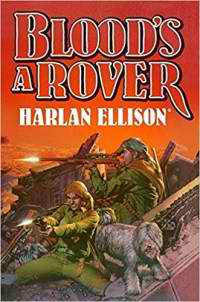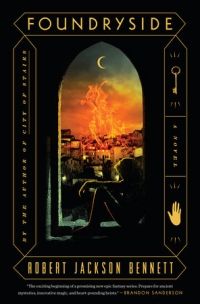Night Hawks by Charles Johnson
 Friday, August 24, 2018 at 8:20AM
Friday, August 24, 2018 at 8:20AM 
Published by Scribner on May 1, 2018
Many of the stories in Night Hawks address questions of religion or philosophy. Toshiro Ogami, the “imitation priest” in “Kamadhatu: A Modern Sutra,” left the monastery because he did not have the political or family connections needed to rise in his religion. He translates English books into Japanese while rehabilitating an old, abandoned temple. An African American woman whose book he is translating finds him there. Quite inadvertently, she helps him overcome his self-doubt and find the harmonious unity that has always eluded him.
“Idols of the Cave” is told in the second person, putting the reader in the shoes of a Muslim American soldier who is being court martialed after tumbling into a cave in Afghanistan that had once been occupied by Buddhist monks. A treasure trove of ancient wisdom sparks a discussion between the Muslim soldier and a Christian major and an outcome that Aristotle might categorize as either comedy or tragedy — the court martialed soldier does not know which characterization would be more accurate.
“The Weave” describes the theft of wigs and extensions made from human hair from a salon by a former employee who believes she was unjustly fired for burning a customer. The hair comes from the heads of Buddhist women who are shorn in order to let go of all things cosmetic. The story, narrated by the thief’s boyfriend, is about letting go of the things that turned the former salon employee into a thief, including her pain and “the absurdities of color and caste.”
A student of Socrates, presumably Plato, narrates “The Cynic.” He laments the condition of postwar Athens, the prevalence of people who aspire to power rather than good, who learn from sophists how to disguise truth and perfection, and at the same time challenges the wisdom of Socrates, Aristotle, and particularly Diogenes, who forces Plato to consider the possibility that it is more important to be than to understand.
Other stories are closer to home, but are still informed by philosophy, particularly by Buddhist thought. A Seattle cab driver in “Occupying Arthur Whitfield,” ruminating about the unfair divide between the 1% and the rest of us, burglarizes the home of a wealthy man, only to learn that the differences between the rich and poor are often less significant that the suffering that all human beings share. A similar lesson is learned in “Welcome to Westwood,” when the narrator, irritated by the loud music played by a neighbor, learns to replace his irritation with compassion.
“The Night Belongs to Phoenix Jones” is a fictionalized account of the narrator’s encounter with a real-life black man in Seattle who gained some fame by dressing as a superhero and fighting (or, as the police viewed it, committing) crimes. The point of the story is that people have the power to invent themselves, perhaps the most important superpower of all.
Another real-life African American, the playwright August Wilson, is the subject of “Night Hawks,” a story written as a wide-ranging conversation that touches on the soul of the artist, the difference between tough exteriors and sensitive interiors, “the ambiguous state of black America,” and the tragedy of art that never reaches the audience that most needs to see it. Reality intrudes on intellectualism when the two men observe the night hawks who roost at an IHOP at 3 a.m., a juxtaposition that suggests the importance of art as a refuge from the violence and suffering that surrounds us all.
The remaining inhabitants of Earth in “4189” are immortal, but some of them use a forbidden drug that helps them imagine they might die, which is essential to appreciating a moment of time. But death, the only forbidden fruit, becomes the only taste that Shane and his lover crave. This story is about a society that subordinates individuality for the collective good. With its surprise ending, this is one of the best science fiction short stories I’ve read this year.
A song that contains a map to freedom for runaway slaves is at the center of “Follow the Drinking Gourd.” On the silly side, “Guinea Pig” describes an experiment in which a student briefly inhabits the mind of the researcher’s dog.
All of Charles Johnson’s stories are carefully polished gems. This collection demonstrates Johnson’s versatility, blending philosophy with the reality of modern street life. It is the product of a warm, generous, and thoughtful mind, the kind of enriching fiction that offers a chance to take a break and feel grateful for life and for artists who help us understand the possibilities it offers.
RECOMMENDED



